Article and Features
10 Controversial Art Pieces That Shook the Art World
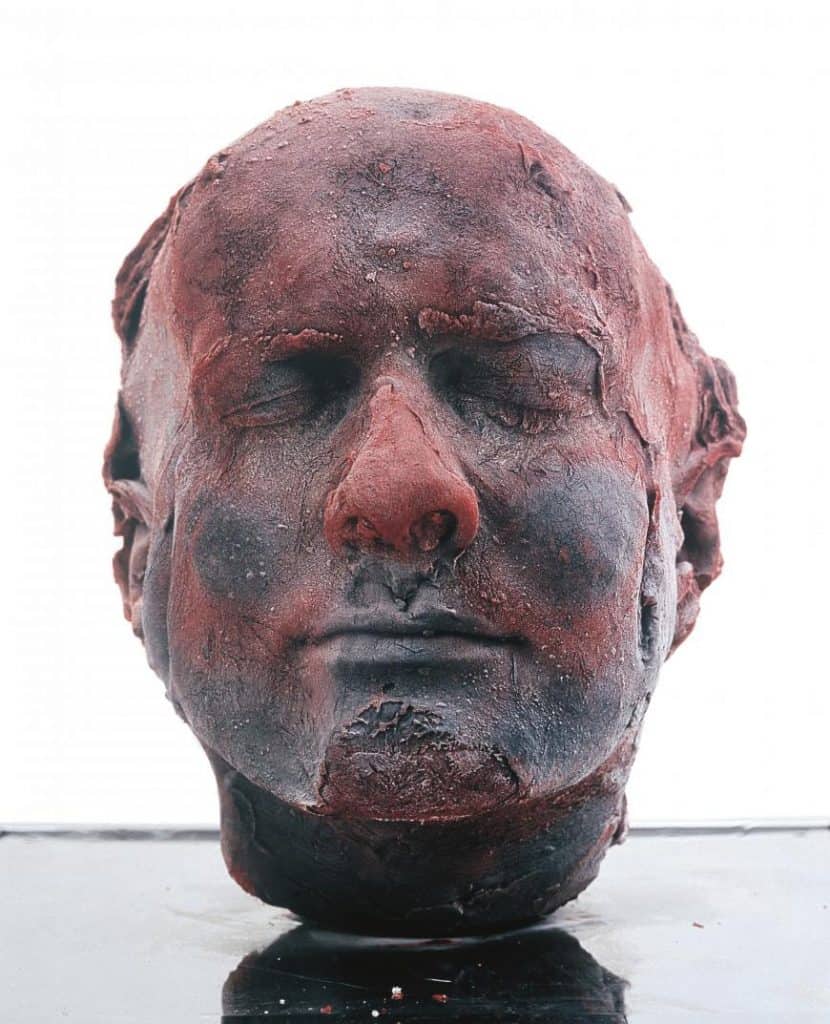
By Shira Wolfe
Almost by rule, creators of controversial art like to provoke their audiences. Some definitely more than others. No matter the period, there are always those who boldly go against the ruling artistic traditions of the time, or those who depict topics that are considered taboo. Often, these artworks have been banned, damaged, or publicly scorned. Yet they have also left a huge mark on art history, paving the way for freedom of creativity and expression, and inspiring people throughout the centuries. What follows is a list of 10 of the most controversial art pieces throughout art history. Ironically, most of these are today heralded as some of the greatest works of art in history.
1. The Last Judgment – Michelangelo, c. 1536-1541
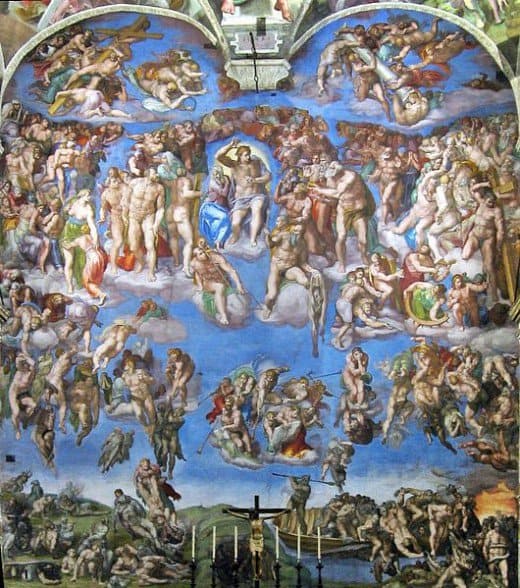
This magnificent fresco by Renaissance master Michelangelo, which covers the whole altar wall of the Sistine Chapel in Vatican City, depicts the Second Coming of Christ and the final judgment by God of all of humanity. At the time of creation, the fresco sparked a major dispute between the Catholic Church and lovers of Michelangelo’s work. The Church was disgusted that Michelangelo chose to depict nude figures in such a holy place, and stated that this type of art was meant for public baths and taverns. Consequently, after Michelangelo’s death, the genitalia were censored by painting over them with draped fabrics.
2. The Nude Maja – Francisco Goya, c. 1797-1800
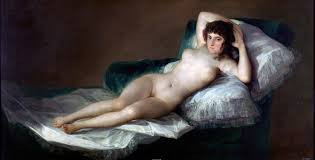
The Nude Maja is the first in a series by Goya. The second is The Clothed Maja. In the religious and political climate of Spain at the time when Goya painted The Nude Maja, depicting a naked woman like that was extremely controversial art. He was also one of the first to portray his naked model staring straight at the viewer so boldly and unashamedly. The Spanish Inquisition rejected and confiscated the painting in 1815, declaring Goya was to paint a new version in which the woman was clothed.
3. Origin of the World – Gustave Courbet, 1866
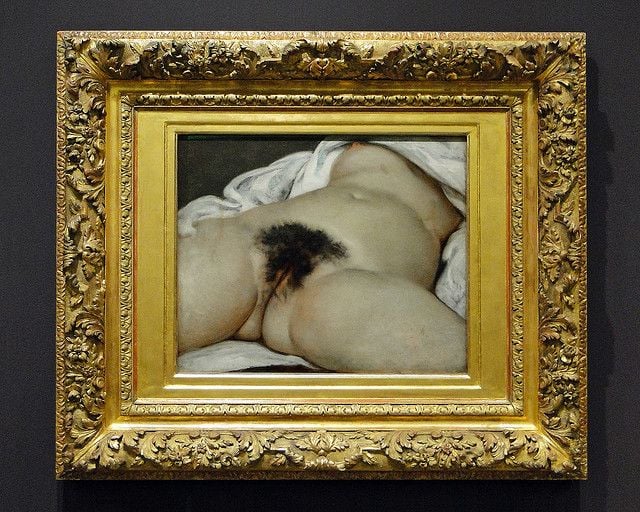
If we consider how controversial paintings of full nudes were in the 19th century, it is incredible to imagine how brave and radical Gustave Courbet was for his time when he painted The Origin of the World, an extremely realistic, up-close painting of a woman’s naked thighs, vagina and torso. The painting was completely revolutionary for its time since Courbet chose to zoom in on the woman’s genitals and naked body, not even depicting her face. As a result, this piece of controversial art is still causing a stir today: in 1994, French police removed a novel that had a reproduction of the painting on its cover from bookstalls. In 2011, Facebook censored The Origin of the World, disabling accounts that put up a picture of the painting.
4. Les Demoiselles d’Avignon – Pablo Picasso, 1907
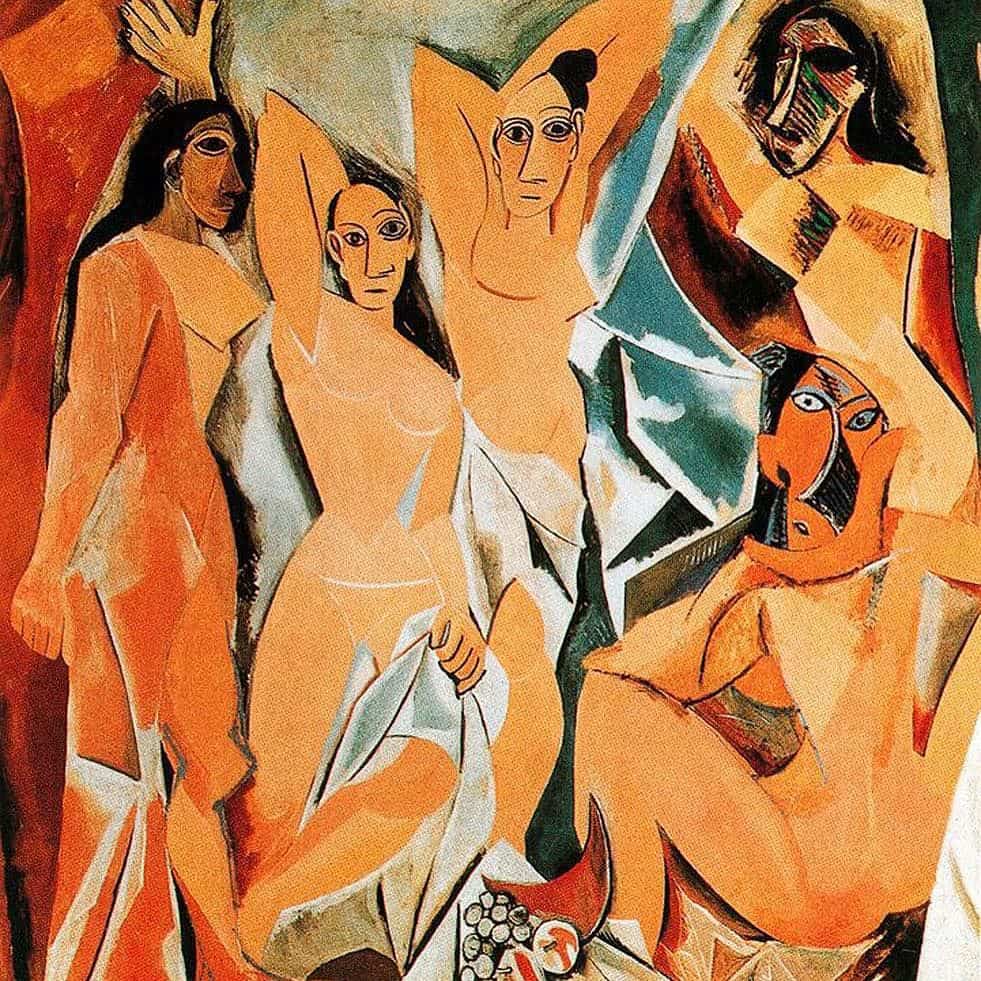
Les Demoiselles d’Avignon marked a radical departure from traditional perspective and composition in painting. It is a key proto-cubist work, depicting five naked women, their figures composed of flat, splintered planes and their faces inspired by African masks and Iberian sculpture. The women in the painting are prostitutes, and the title refers to a street in Barcelona that was famous for its brothel. Upon its unveiling in 1916, many viewers were appalled by the shameless, rough depiction of the five naked prostitutes, their faces and bodies confrontational and fragmented.
5.The Guitar Lesson – Balthus, 1934
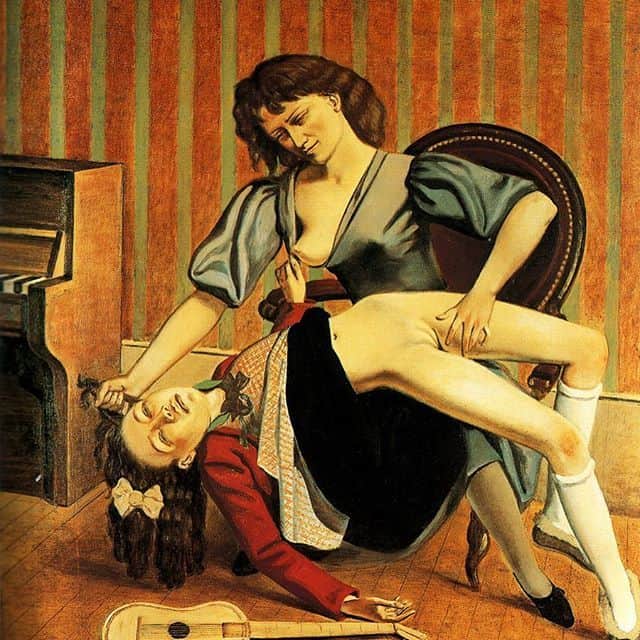
The Guitar Lesson depicts the guitar in question lying on the floor, while the teacher grabs the hair of her underage student and touches her (dangerously close to her exposed vagina) as if she is an instrument to be played. This unsettling portrayal of paedophilia caused a stir when it was exhibited as part of Balthus’s first show in Paris. Due to it being so disturbing and controversial, no one has dared to put it on display since 1977. It is been passed between museums and collectors but remains unexhibited to this day. This would have certainly infuriated the late Balthus, who himself said that his art should only be seen, not written about.
6. Self – Marc Quinn, 1991

Self is a self-portrait of Marc Quinn. However, it is one created by using the artist’s own blood in a cast of his head. Every five years, over the course of five months, Quinn pours five litres of his own blood into the cast. As such, he created an ongoing self-portrait that takes into account change and the passing of time. Many people consider this work to be hair-raising and gruesome. Others herald it for its bold contribution to the self-portrait genre.
7. Myra – Marcus Harvey, 1995
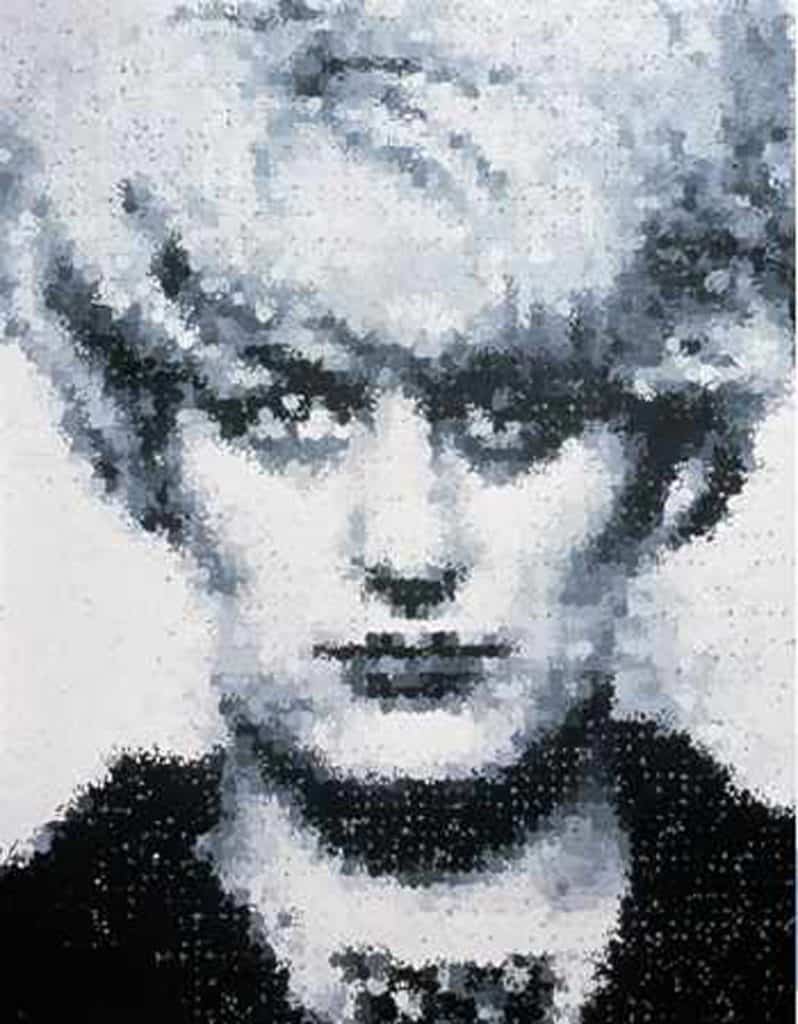
Myra Hindley was a serial killer in the ‘60s, who killed 5 children between the ages of 10 and 17. In 1995, Young British Artist Marcus Harvey painted Myra, a large adaptation of Myra Hindley’s mugshot. In 1997, it was included in the Sensation exhibition of Young British Artists at the Royal Academy of Art in London. Four members of the Royal Academy resigned in protest of the work’s inclusion in the exhibition. A mother of one of the murdered children protested the controversial art’s display. Two artists even vandalised the painting with ink and eggs on the opening day of the exhibition.
8. The Holy Virgin Mary – Chris Ofili, 1996
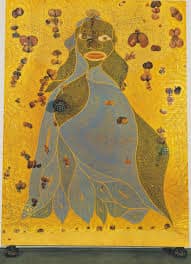
This painting depicts a black Virgin Mary surrounded by female genitalia and buttocks cut out from pornography magazines. One of her breasts is a ball of elephant manure. The painting calls attention to racial stereotypes and the general whiteness of biblical figures in Western representations. However, not everyone has been particularly willing to critically delve into the meanings behind this painting. In 1999, the painting was exhibited at the Brooklyn Museum in New York. Then mayor Rudy Giuliani called the controversial art sick and disgusting. He also threatened to cut funding from the museum, asserting that the painting was offensive to religious audiences. Several months into the exhibition, a visitor smeared white paint on the painting, claiming the image was blasphemous.
9. New Portraits – Richard Prince, 2014
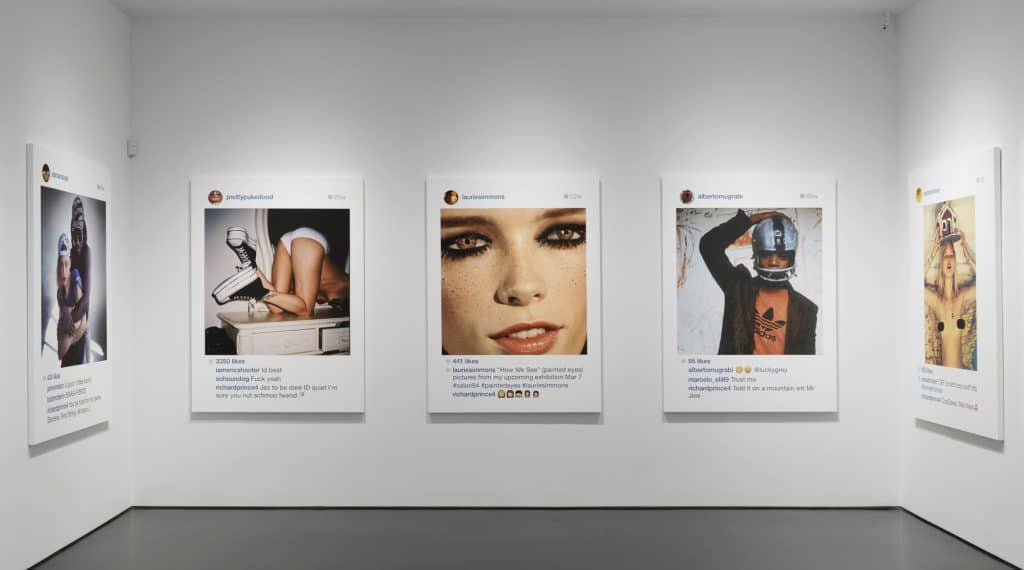
Richard Prince, the king of appropriation, created an exhibition in 2014 displaying rephotographed photographs that he had screenshot off of people’s Instagram accounts. This spurred a heated debate about whether this was an act of genius controversial art or vulgar appropriation. The debate was fuelled even more when his pieces started selling for $100.000. One of the women in the photographs, Missy Suicide, fought back by selling prints of the photograph via Instagram. At $90 apiece, she stated the 99.9% price drop from Prince’s price was a bargain.
10. Domestikator – Joep van Lieshout, 2015
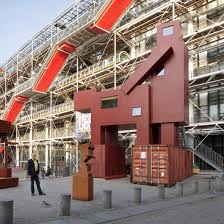
Dutch artist Joep van Lieshout, of Atelier van Lieshout, faced opposition from none other than the Louvre in Paris. It was where his large-scale sculpture Domestikator was meant to be exhibited in 2017. Louvre president Jean-Luc Martinez found that the sculpture, which appears to represent a man having sex with a four-legged creature, was too sexually explicit to be displayed in his museum. The Centre Pompidou then quickly stepped in and offered its front square as an exhibition space. Van Lieshout explained that the controversial art piece is about the domestication process. With the sculpture, he says he is trying to start a conversation about the human tendency to dominate nature. Van Lieshout believes humans push for more and more technological developments that will lead to machines dominating the world.
Relevant sources to learn more
Controversial Public Art. Debate, Fury, Vandalism and Loss
Love at First Sight? Controversial Architecture & the Buildings We Learned To Love